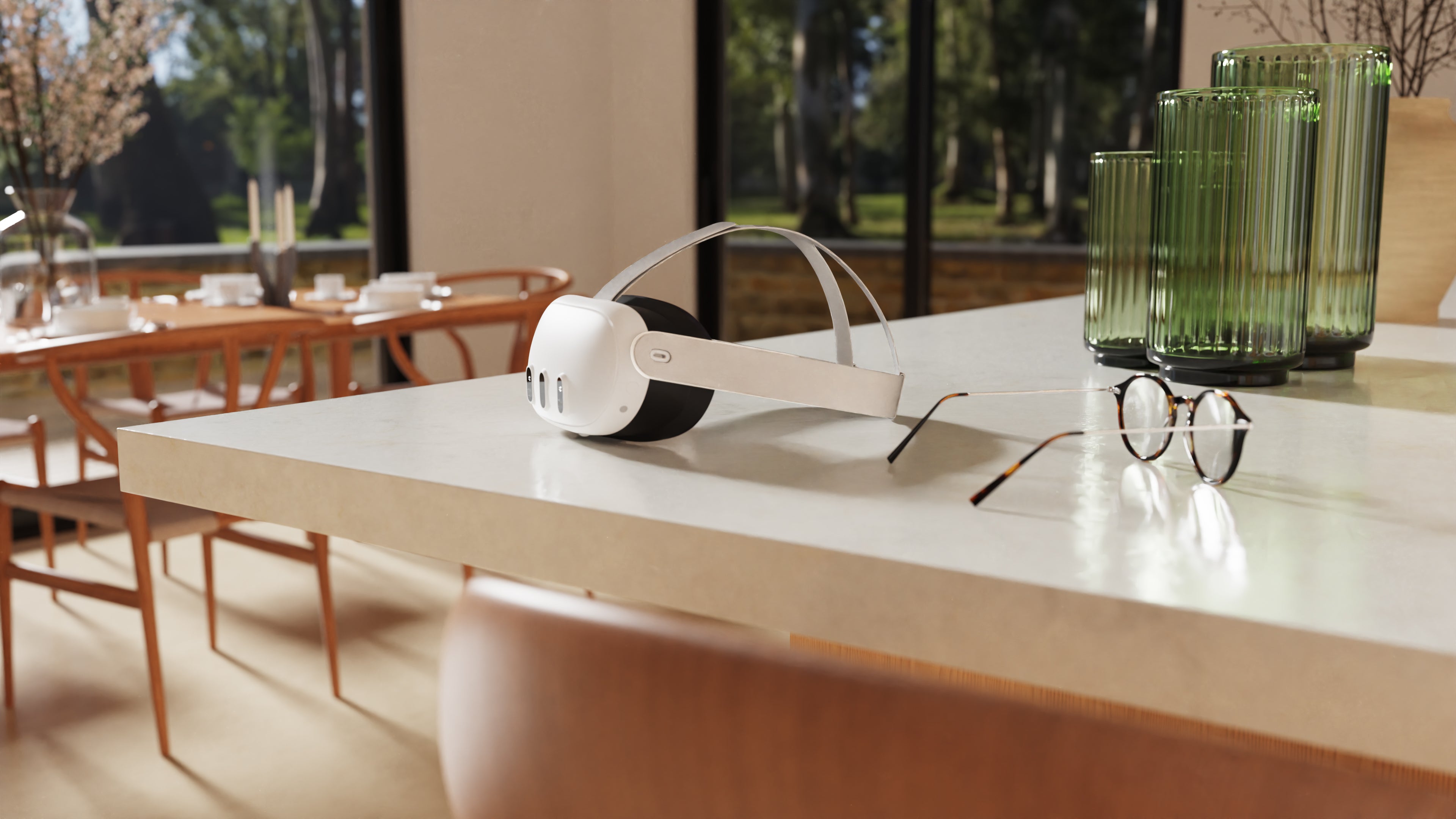Virtual Reality has made inroads into every facet of our lives. A sizeable 23% of American households own or have used a VR headset. VR holds tremendous potential in transforming healthcare, education, remote training & upskilling, tourism, entertainment, and more. With the sale of VR headsets growing by 31% year-on-year, this $8 billion industry is poised for rapid progression in the coming years. However, many users are still adjusting to the unique requirements of VR headsets, especially those with nearsightedness and other common vision conditions.
Of the 63.7% of American adults who wear prescription glasses, most will need to wear prescription glasses or lenses while using a VR headset. It is no surprise that several VR users in this population pool are either struggling to juggle their glasses with their bulky headsets or are compromising the quality of their virtual experience. In this article, we'll explain why corrective lenses are necessary despite the proximity of the VR screen to the eyes and how prescription lenses can in fact improve the overall viewing experience for those needing vision correction.
Here’s where the lens inserts from Reloptix take over. The lightweight and comfortable magnetic VR prescription & non-prescription lens inserts from Reloptix are a game changer. These premium anti-glare prescription lenses with blue light protection shield your eyes from fatigue, providing a premium viewing experience without compromising on comfort. The best part? Your VR headset wears the lens inserts, not the bridge of your nose, so you can enjoy a fuss-free fit and a more immersive VR experience.
Still not convinced? Read on to discover why you do need glasses in VR and how Reloptix lens inserts can make a world of difference to your VR experience.
The Science Behind VR Lens Inserts And How They Overcome Vision Impairment Conditions
Any eyewear for vision correction enables the user to achieve precise and razor-sharp vision in everyday life. When it comes to VR headsets, however, traditional eyewear, in some cases, is not tuned for their headset’s fixed focal point, potentially affecting the overall engaging and life-like experience. Whether it is art appreciation, VR flight simulators, VR concerts, or educational VR experiences, you want to be able to soak in crystal-clear imagery and visual cues. This is better suited with lenses tailored for a headset's specific focal distance.
Many VR headset users think they don’t need vision correction because the VR headset is so close to their eyes. Unfortunately, proximity is not the determining factor, but focal length. Focal length, which is the distance between the center of a lens and its focus, is anywhere between 1.3 meters to 2 meters in VR headsets, depending on the build and the brand of the headset, this is around double the distance of a computer screen.

Therefore, in practicality, the user is already focusing their vision at a minimum distance of one meter or more. What’s more, the graphics in VR headsets often cover an infinite plane that goes beyond the focal point/length, especially for experiences such as tourism, gaming, entertainment and more. This requires users suffering from short-sightedness(myopia) to rely on corrective vision and enhancement tools such as VR lens inserts.
Other visual refractive errors that benefit from VR lenses are those with astigmatism and presbyopia who see blurry at far and near distances unless corrected. Reloptix, self-adjusts incoming prescriptions based on the final prescription, maximizing your clarity for VR usage.
Further, for typical screens such as televisions, the focal plane and the screen distance are identical. This isn’t the case with VR headsets. The focal plane and the screen distance are oftentimes not the same, with the focal distance often being much more than the screen distance.
Vergence-Accommodation Conflict And Its Impact on VR Experience
Many times, the graphics and 3D experience in VR headsets also cause what is called the vergence-accommodation conflict. Simply put, the vergence-accommodation conflict is a phenomenon involving a gap between the focal distance and the vergence distance. It is often a feature of 3D visuals that involves viewers focusing on objects that are at a further depth from the display screen of the VR headset.

Ref: link
Not only does the human eye take time to adjust to the gap between the focal distance and the vergence distance, but prolonged conflict can also cause discomfort, fatigue, and even headaches. For these reasons, VR headset users with vision impairment stand to benefit from using lens inserts. This ensures one hundred per cent optimal vision and reduces the time involved in adjusting to objects in 3D on the display screen.
Yet another technical factor impacting vision quality in VR headsets is Interpupillary Distance (IPD), which simply means the distance between the centre of your eyes or pupils. The average IPD for adult humans is 63mm and most VR headsets have an IPD range from 54mm to 72mm. It's important to make sure your headset’s lenses are set to the most comfortable IPD setting for you and to provide the proper IPD when getting corrective eyewear to avoid blurry or warped image quality. If you're unsure how to measure your pupillary distance, you can use free tools like Optigrid’s PD Measurement Guide to get accurate results. A mismatch in IPD can cause viewing discomfort and inaccurate lens focus.
All of these scientific concepts point towards a simple corollary – if you need glasses to view objects at a distance in the real world, you most certainly need a VR lens to view objects at a distance in the virtual world too.
So, the answer to the question, “Do Nearsighted, Astigmatism, or Presbyopia People Still Need Glasses with VR?” is a resounding yes!
Enhancing Your VR Experience: Why VR Lens Inserts Outperform Prescription Glasses
Now, are VR lens inserts worth the investment? There are several reasons that prescription glasses perform sub-optimally in VR headsets:
- Clarity: A VR lens insert attached to a headset’s eyepiece is stationary ensuring accuracy of IPD and focus as opposed to a pair of glasses which can affect how it sits on the user's face. This can cause visual aberrations and blurriness, especially in times of movement which is very common in VR. Also, having lenses that take the user’s prescription and tailoring them to the headset’s focal distance, makes for a more optimized experience overall.
- Irreparable scratches: There is little to no distance between your eyes and most VR headset lenses, which makes wearing glasses uncomfortable and sometimes outright costly. Any sudden movement or friction can cause your prescription glasses to scratch the VR headset lens, or the other way around, causing irreparable damage. Most headsets have lenses that are not replaceable or easily repaired.
- Compromised comfort: Glasses pressing into the bridge of your nose or sides of the head get very old, very fast. It is one of the major reasons people take off the headset or avoid using them altogether. VR lens inserts are like not having eyewear at all.
Determining The Right Specifications For Your VR Lens Inserts
The specifications for regular prescription glasses or prescription lenses are different from those used for lens inserts. If you are wondering what specifications to use when ordering VR lenses, Reloptix has you covered! All you need to do is provide us with your regular distance prescription or Bifocal/progressive prescription. Reloptix adjusts these incoming prescriptions to single-vision VR distance in-house, which will be used to curate your personalised lens inserts. Do not use contact lens prescriptions. For more on this, head to our prescription guide for more information regarding your prescription-related queries.
For more information on VR lens inserts and options, check out our other products and informational videos on YouTube. Founded in 2020, Reloptix is a completely US-based company based in Colorado that specializes in VR lens inserts. Reloptix prides itself on innovative design, high-quality lenses, and world-class customer service which has made it an authority in the VR optics space.



Share:
The Essential Pricing Guide for VR Prescription Lenses